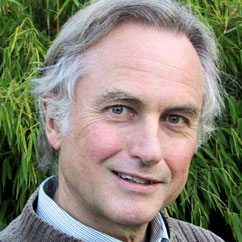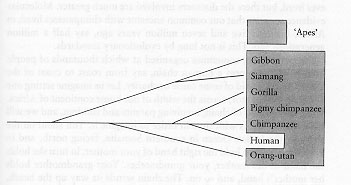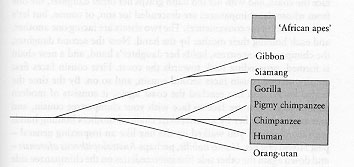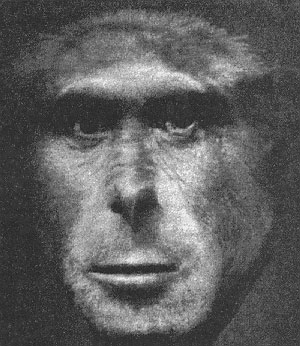 |
| Sodom and Gomorrah |
Following on from the
previous post, is it possible for the
Abrahamic religions ever to accept people with 'non-Biblical' sexual orientations? Is the story of Sodom and Gomorrah always going to be a background narrative?
But while the Abrahamics seeth with homophobic hatred resulting in doctrinal and physical queer-bashing, there is fortunately one spiritual tradition that 'doesn't fault gay sex or gay people in any way whatsoever.'
From The Bay Area Reporter
'In the crowd of streetwise San Franciscans lining up for needle exchange, he stands out: a 52-year-old gay Buddhist monk, lean and sinewy in his bright yellow and red robes, chatting amicably with the men and women in line while swapping clean syringes for the dirty ones he collects.
His name is Tekchog, and he knows firsthand what it's like to need a clean needle. Before he was Tekchog, he was David Ruch, a gay man living in the Castro, addicted to crystal meth and having unsafe sex with a partner who shot speed. But that, it seems, was a lifetime ago; before protease, before he found Buddhism, before his lover died. And every Tuesday night for the past eight years, "come rain or shine or earthquake," as he puts it, he's been here, behind the Market Street Safeway, handing out needles to stem the tide of HIV.
"Heroin and speed users don't take holidays," he said, packing away bins of syringes that will later be incinerated by the city. "They depend on us to be here. And everyone I know knows that on Tuesday nights, this is where I am."
Soon enough, Tekchog's Wednesday nights will also be spoken for. Starting January 4, he'll be teaching introductory meditation classes at the San Francisco LGBT Community Center as part of his temple's outreach to the gay community. "The classes are an opportunity to develop your mind and become happy," he said with a sly grin.
Has it worked for him? Is this celibate gay monk living in the Castro any happier than the rest of us? The story he tells, like the stories of many who have weathered drug abuse, illness, and loss in gay San Francisco these past two decades, is replete with heartbreak. But Tekchog is animated in the telling, his bright blue eyes flashing. "Happiness is all in the mind," he said.
Coming out
Not realizing he was gay, Ruch was married in 1980 and lived with his wife, Linda, in a pastoral Idaho town while pursuing a Ph.D. in biochemistry. In 1982 Linda got pregnant, but six months into the pregnancy was diagnosed with ovarian cancer; she had a massive tumor the size of her fetus. After three grueling months of chemotherapy, she delivered a healthy baby girl, Erin. Two months later, in January 1983, Linda died.
Shell shocked, Ruch stayed in Idaho to finish his Ph.D. After a long mourning, he began experimenting with men, eventually falling in love with one of his male students. The two had a commitment ceremony and, with Erin, moved to a new life in San Francisco. The city's banquet of available men, casual sex, and crystal meth, however, proved too enticing for the couple. "It didn't take us long, living in this candy store, to break up," Tekchog said.
His next partner, a younger man, had a serious speed habit. "I thought I was going to help him. Instead, I got addicted," he said.
Crystal meth is an all-consuming beast, and the descent into its clutches is most often marked with loss ? of health, home, self-respect, employment. Ruch and his partner were no exception. His partner shot speed. Clean needles were nowhere to be found. They had sex without condoms. Before long, when a colleague found speed on his laboratory bench, Ruch lost his high-paying research job. "I started washing dishes at Orphan Andy's, even though I had a Ph.D. And I was still doing speed," he said, with unmistakable regret.
On April Fools' Day, 1995, the other shoe dropped. He tested HIV-positive and, he said, realized his life was careening toward disaster. In desperation, he turned to the AIDS Health Project.
"The first thing I had to do was break up with my partner, otherwise him, me, and my daughter were all going down the toilet." He ended the relationship, stopped using speed, and found a full-time job at the San Francisco AIDS Office, a position he still holds today.
Spiritual life
Clear-headed for the first time in years, he saw, on a distant horizon, the possibility of a spiritual life. "I was looking for ways to control my mind, and everything I picked up pointed me toward mediation and Buddhism." He found an introductory mediation class, the kind he now teaches, offered by the temple that would later ordain him. He loved it, never missed a class, and had soon immersed himself in an earnest study of Buddhist teachings.
 |
| Objects of Refuge |
A refuge for queer people
Tekchog is quick to point out that, despite a now infamous condemnation of homosexuality by the Dali Lama in 1997, Buddhism is indeed a refuge for queer people. "It's a religion that doesn't fault gay sex or gay people in any way whatsoever." And the Dali Lama's comment? "Unmitigated bull," Tekchog said, "and not backed up by Buddhist scripture."
After years of ardent study, he felt called to still deeper spiritual practices. "I wanted to control my mind and become a Buddha in this life." The only way to do that, he said, was to take the vow of celibacy and become a monk. He was ordained in 2000, given his new name (pronounced like it's spelled, TEK-chog), which means "supreme vehicle," and has worn his robes ever since.
But "monk," as Tekchog lives it, does not entail sleeping in a bare cell with no possessions and meditating alone all day. He leads, instead, a deeply engaged life. Besides his AIDS Office job and volunteering at needle exchange, he also runs the North American Buddhism in Prison Project, corresponding with some 500 prison inmates who are interested in meditation and Buddhism. He manages the entire program himself from a tiny office in the Castro apartment he shares with Erin, now 22. She's working on her bachelor's degree in photography and filmmaking at the San Francisco Art Institute.
Tekchog approaches the prison project and needle exchange with a disarming lack of judgment, viewing himself as a servant to other beings who, with any luck, will also find their path to happiness and, ultimately, enlightenment.
"Being happy is a state of mind," Tekchog said. "If you have control over your mind, you can control whether or not you're happy. It's as simple as that."
Introductory meditation classes begin Wednesday January 4, from 7 to 8:30 p.m. at the LGBT Community Center, 1800 Market Street. Classes are free and open to all. For more information, visit the Kadampa Buddhist Center, 3324 17th Street. Phone: (415) 503-1197. Or visit
www.Kadampas.org. '
 |
| The Abrahamic Tradition |
"...Bruce was drawn to Buddhism for a plethora of reasons. One of the main emphases of Vajrayana Buddhism is compassion. Another aspect of Buddhist teachings that Bruce found appealing is its views about "sin". According to Buddhist teachings, Bruce said, there should be no sense of guilt because we all naturally transgress. Another important factor, and possibly the factor that sealed the deal, for Bruce, was the fact that his homosexuality was not a problem for local Buddhists. As a gay man, Bruce wanted to be a part of a religion that would validate him as a person. Geshe Kelsang, the spiritual head of the Dromtonpa Kadampa Buddhist Center, does not regard homosexuality as misconduct. His teachings do not treat gays and lesbians as inferior in any way. Scott said that he experienced more acceptance of his sexual orientation in Buddhism than he had in either Catholicism or the Baha'i faith..."
+++
RELATED POSTS
Alan Turing - A Gay Buddhist Chemically Castrated and Mentally Destroyed
LONDON MOSQUE IDENTIFIED AS EPICENTER OF HOMOPHOBIC 'STREET JIHAD'
Cambodian LGBT Pride Festival gets Buddhist Blessing
---
---











